Scrambling…what is scrambling? Well, it’s basically the middle ground between walking and climbing.
Ever been out on a rocky, exposed sort of hillwalk and find yourself putting your hands out onto the rock on the steep sections? Maybe to steady yourself a bit, maybe to pull yourself up? That. That’s scrambling. It’s naturally quite a broad church, this scrambling business, with the lower end being essentially a walk over very challenging terrain, and the upper end being more like a low-grade rock climb.
With that in mind, the kit you’ll need can be quite varied, depending on the severity of the route.
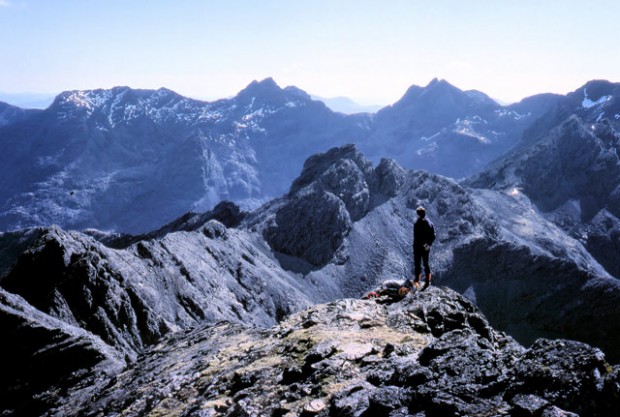
Let’s begin with footwear…
Boots
Needless to say, boots for scrambling need to offer decent support. If you’re standing on footholds rather than simply on flat ground, super-comfy boots with soft bendy soles and soft bendy ankles won’t be super-comfy for long, as your own soles and ankles are going to be doing all the work. Your boots need to provide a supportive platform to stand on. That said though, an utterly rigid mountaineering boot is likely to be far too stiff. Try a few pairs on and look for little edges to stand on, see how they feel. A lot of decent outdoor shops will have a miniature, simulated fragment of rocky hillside for auditioning boots on, but just using the edges of shelving or staircases will give you an idea.
A decent rand (protective rubber cladding which extends up from the sole) is useful on a scrambling boot too: scrambling can involve some fairly undignified footwork, such as kicking your toes into rocky cracks. Such behaviour does not treat leather well.
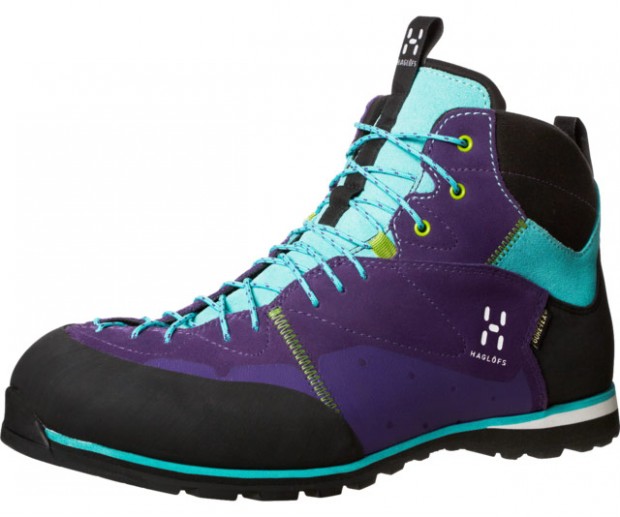
There aren’t many things out there which are advertised as “a scrambling boot”, though some do lean pretty heavily that way. Usually looking rather like the love child of a walking boot and a technical sticky rock-shoe (funny that), something like the Haglöfs Roc Legend Mid is worth a look: sticky rubber sole for traction, asymmetric shape, high rand over the front, lacing down to the toe for a precise fit. Basically, the features of a rock boot, but with added walkability. No, that’s probably not a real word. Dragon purple or Dynamite red may not be everyone’s flavour, but the rock-boot-meets-walking-boot concept does undeniably make a lot of sense for scrambling, especially as things start to get more technical. Bear in mind though, sticky rubber soles tend to be fairly soft. While they last, the softness is what makes them sticky and this is obviously great for grip, but because they’re soft…well, soft rubber, hard rock: they’ll wear out quicker.
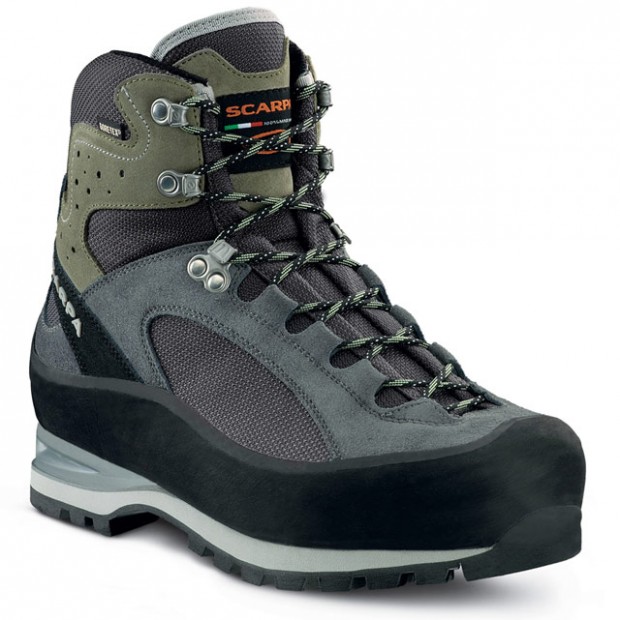
Coming at it from a different direction, things like the Scarpa Cristallo or LaSportiva Trango S Evo take the idea of a big, chunky, four-season mountain boot, then pare away excess weight and add various climbing type features. The high rand, precise lacing and asymmetric shape are there again, but the sole is done differently. Harder rubber is used, which isn’t as sticky as the softer compounds, but it’s more durable and because the tread is made of firmer stuff, it digs in better when not being used on rock. Often nowadays, a smoother patch will be incorporated under the toe, as a nod in the direction of climbing performance. This type of boot will be heavier and stiffer, but will behave as more of an all-round mountain boot.
As always, the boot buying mantra is “Buy the ones that fit you”. If the perfect scrambling boot digs in round the ankles or lets your heel swim around with every pace, it’s not perfect.
Clothing
As scrambling is a fairly close cousin of mountaineering (you could convincingly argue that it’s a sort of a sub-section of mountaineering), the clothing you’ll want is the sort of thing which makes sense for mountaineering in general. All the usual rules of outdoor clothing apply: wicking base layer, insulating mid layer, weatherproof shell layer, extra insulation for when you stop moving, etc. We shan’t get bogged down here in descriptions of how the layering system works, or of all the different types of fabric and their relative merits, but there are some key features to consider.
The nature of scrambling means you’ll come into contact with rock, so durable stuff is needed. There can be a lot of crossover from hillwalking clothing of course, but there’s rather more high-stepping and reaching involved in scrambling: you need to consider freedom of movement. Either through stretchy fabrics or through cunningly implemented panels of fabric, your gear needs to let you move without seams coming tight and holding you back. Imagine ballet dancing in skinny jeans. OK, OK, you can stop now. You’re best not hanging onto that image for too long.
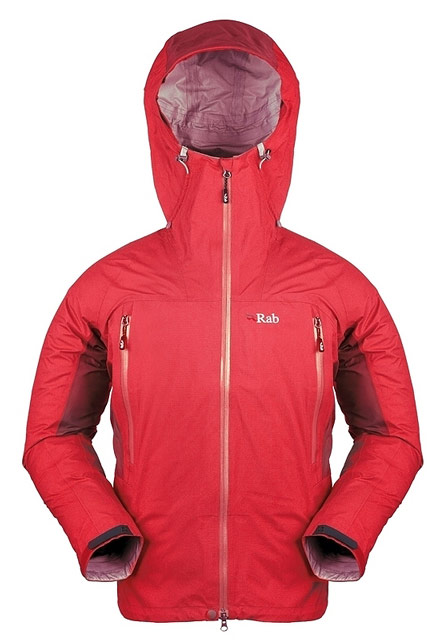
Jackets. There are millions of them. Nowadays, almost all the waterproofs you’ll find are what used to be thought of as short-cut. The upshot: virtually every jacket you find will be short enough to stay clear of your legs. Check the arm movement too. Mountaineering jackets are cut to allow high reaching without the whole thing riding up, which you’ll appreciate as you clamber over the steeper bits.
Of use on more demanding scrambles is a hood that fits over a helmet, and pockets which can be accessed when you’re wearing a harness.
Helmet? Harness? Really?
Oh yes…
Equipment
Scrambling often gets broken down into three grades (Grades 1, 2 & 3, imaginatively enough)
- 1 being basically an exposed walking route over terrain that will necessitate a bit of clambering;
- 2 needing occasional use of a rope to protect a more tricky patch;
- 3 being up to about “Mod” or “Diff” in climbing book grades – the sort of route where you may need to protect quite a bit of it using climbing techniques.

Helmet – You may choose not to wear a lid, it’s up to you, but is a very good idea to wear one. Higher graded scrambles are really easier climbs, which often means following the line of least resistance up a mountain. This is also the line of least resistance down the mountain, and therefore a likely place for bits of loose rock to collect. If anything dislodges it, you’ll want to be wearing a helmet.
Rope – If you’re roping up, you should have a length of at least 30 metres, but modern skinny single ropes allow you to carry 50 or so without paying a massive weight penalty. This allows more options, both for climbing and abseiling off, should it come to that.
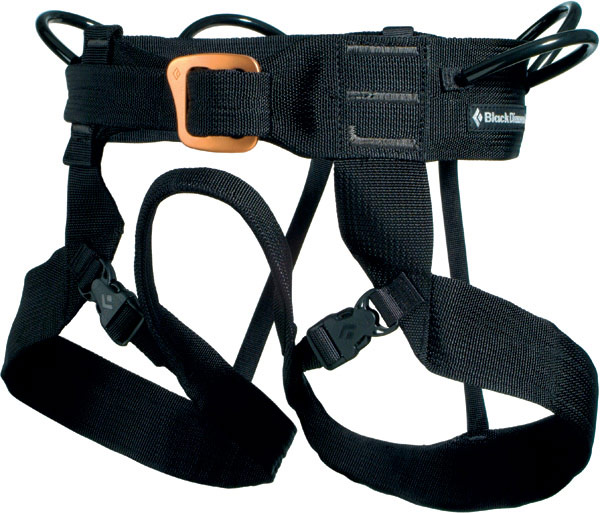
Harness – Some harnesses can be pretty swanky, and if you’re using one – unless you’re using it for other types of climbing or mountaineering too – getting one that’s pretty simple is a good idea; something like a Black Diamond Bod, for example. You want one that’s quick and easy to put on, which isn’t massively bulky or heavy when you’re carrying it. The good news here is: Simple Harness = Not Much Fancy Engineering = Nicely Affordable.
Protection – A basic rack of protective bits and pieces will be needed for more technical scrambles. Not the full-on set of jangly ironmongery carted about by climbers, but a more stripped down version of the idea. A belay device, a small selection of nuts and hexes, a few slings and HMS krabs, some long extenders, and a nut-key for prizing it all back out again. With that little lot, a great deal of very interesting territory can be explored.
This should be blindingly obvious, but it’s worth saying, just in case: know how to use the stuff you’re taking! You could go on a course, hire an instructor for a few sessions or hook up with an experienced friend if you don’t have a decent working knowledge of ropework techniques. Loads of pretty keen climbers won’t necessarily know the more mountaineering-based skills that might be useful when scrambling – Italian Hitches, direct belays, moving together – but they’re simple enough to learn. There are books and online tutorials, but there’s no substitute for getting out there and getting experienced.
Other Stuff
There’s little else that isn’t already included in the general purpose, overarching, going out in the mountains kit list that crosses over most activities: first aid kit, headtorch, navigation gear, etc. On a related note to navigation gear though, a scrambling guide book is a worthwhile investment. Many classic routes which you’ll probably want to try out will be described in detail, often with annotated photos and topographical diagrams to help with routefinding.
Finally, you’ll want a bag to put it all in. Like with clothing and protective gear, a scrambler’s rucksack is pretty much a mountaineer’s rucksack. Uncluttered so there’s not much to snag on rocks or get in the way of your wriggling elbows, tough fabrics to resist abrasion, close fitting and fitted with compression straps so it’s stable and not going to overbalance you. Try some bags on – with weight in it, they’re all comfortable when they’ve got nothing in them! – and see what works. There should hopefully be no gaps between you and the pack, and it shouldn’t flop around when you move. If in doubt, ask the store staff for fitting advice.
Scrambling’s a bit of a mongrel of an activity: a bit of walking, a bit of climbing. So, it was always going to be the case that the kit list is a bit of a mongrel too. The good news, therefore, is that if you’ve done much climbing or hillwalking, chances are you won’t be starting from scratch.